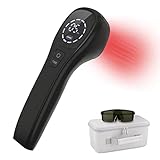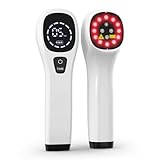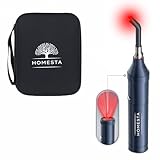Find the Perfect Red Light Therapy Device for Your Needs in 2025
Updated On Dec 2025
1,501 Reviews Studied
Red light therapy has become a popular treatment for a variety of health concerns, including pain relief, skin rejuvenation, and overall wellness. With advancements in technology, the market is now filled with numerous devices, each boasting unique features and benefits. This comprehensive guide will help you navigate through the best red light therapy devices of 2025, ensuring you find the perfect fit for your needs.
Red light therapy (RLT) involves using low-level wavelengths of red light to treat various conditions. Originally developed by NASA for plant growth experiments in space, RLT has since been found to offer significant health benefits for humans. The therapy works by stimulating cellular activity, promoting tissue repair and regeneration. This makes it an effective treatment for a range of issues from chronic pain to skin conditions.
Pain Relief: One of the most celebrated benefits of red light therapy is its ability to reduce inflammation and alleviate pain. It penetrates deep into tissues, providing relief from chronic conditions such as arthritis and muscle soreness.
Skin Health: RLT is known for its anti-aging effects. It boosts collagen production, reduces wrinkles, and helps in treating acne and other skin conditions. The therapy can leave your skin looking healthier and more youthful.
Improved Circulation: The therapy enhances blood flow, which is crucial for overall health. Improved circulation means better oxygen and nutrient delivery to cells, promoting faster healing and recovery.
Mental Health: Studies suggest that red light therapy can have a positive impact on mental health by improving mood and reducing symptoms of depression and anxiety.
When selecting a red light therapy device, consider the following factors:
Wavelength: Devices typically emit wavelengths between 600nm to 900nm. Different wavelengths penetrate the skin at varying depths, targeting different conditions. For instance, 660nm is effective for skin treatment, while 850nm is better for deep tissue healing.
Irradiance: This measures the power of the light and affects the effectiveness of the therapy. Higher irradiance levels allow for shorter treatment times.
Treatment Area: Depending on your needs, choose a device that covers the appropriate area. Larger panels are suitable for full-body treatment, while smaller, handheld devices are ideal for targeted therapy.
Portability: Consider whether you need a portable device. Portable units are convenient for travel and can be used anywhere, making it easier to maintain your therapy routine.
Ease of Use: Look for devices with user-friendly interfaces. Features like adjustable timers, intensity settings, and easy operation can enhance your experience.
Red light therapy is generally considered safe with minimal side effects. However, it’s essential to follow the manufacturer’s instructions carefully. Overuse or incorrect usage can lead to skin irritation or eye damage. Always protect your eyes when using these devices, especially those emitting higher irradiance levels.
For optimal results, consistency is key. Most experts recommend starting with short sessions of 10-20 minutes, gradually increasing as your body adjusts to the therapy. Combining RLT with other treatments or lifestyle changes, such as a balanced diet and regular exercise, can amplify its benefits.
Q: How long does it take to see results from red light therapy?
A: Results can vary depending on the condition being treated and the individual’s response. Some people notice improvements within a few sessions, while others may take several weeks to see significant changes.
Q: Can red light therapy be used with other treatments?
A: Yes, red light therapy can be combined with other treatments. However, it’s always best to consult with a healthcare professional before starting any new treatment regimen.
Q: Is red light therapy suitable for everyone?
A: While generally safe, red light therapy may not be suitable for everyone. Individuals with certain medical conditions or those taking photosensitive medications should consult with their doctor before use.
Q: How often should I use my red light therapy device?
A: The frequency of use depends on the device and the condition being treated. Typically, it’s recommended to use the device 3-5 times per week for best results.










